Early August has been unusually warm here, night minimum temperatures averaging16C/61F and day maxima averaging 27C/81F. Growth is fast as long as one waters – we use a hose, which takes time while using less water. Sometimes we water in bright sunlight, and that is fine.
However, since 13th we have much wetter, less hot and gloomy weather. It’s ideal for late blight! I would harvest remaining potatoes soon, and see no advantage to leaving them in the ground.


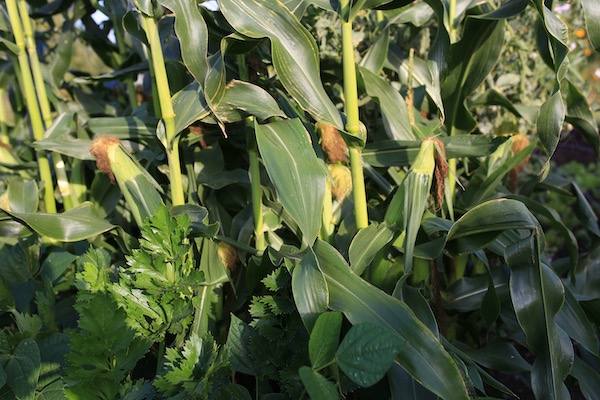
No dig
I have been hearing of drought in the east of England, especially Norfolk. One gardener wonders if a compost mulch is a good mulch when so dry. By the way, compost is a mulch, and works in dry conditions.
Another gardener in Norfolk wondered about spreading his autumn compost now, to increase mulch thickness. I would say that can work, from my experience and also following feedback from dry places such as Arizona and other arid areas. See more about no dig in dry climates on our Testimonials page.
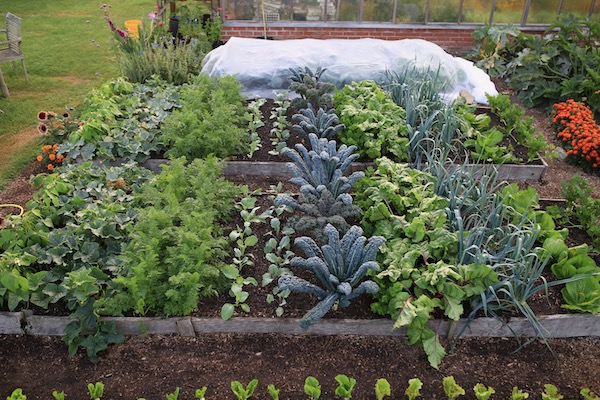
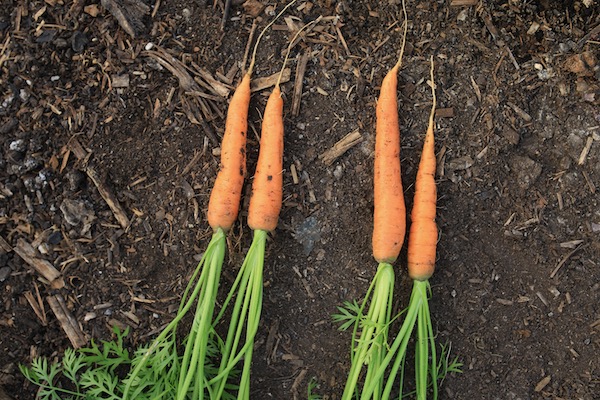

More sowing and planting
There is plenty of sowing to make still, see the timeline. We sowed more spinach yesterday, while the sowings of 10th August are just showing first leaves. I find that 14-18 days is enough time in the greenhouse, for seedlings to be ready. During the hot weather, I was watering twice a day.
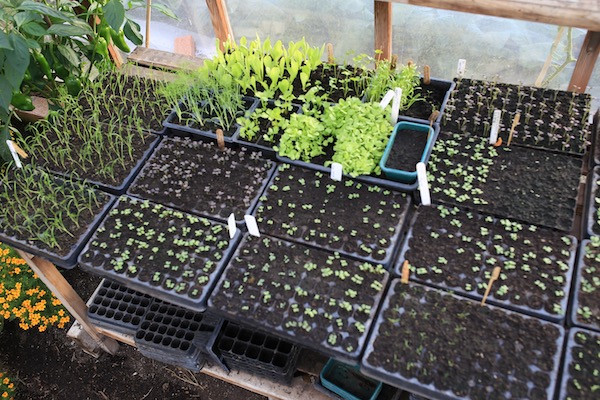
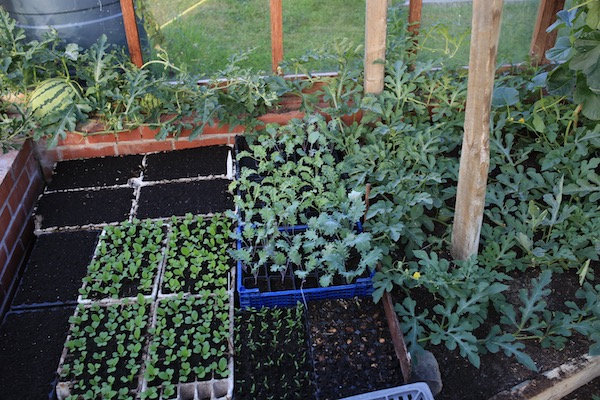
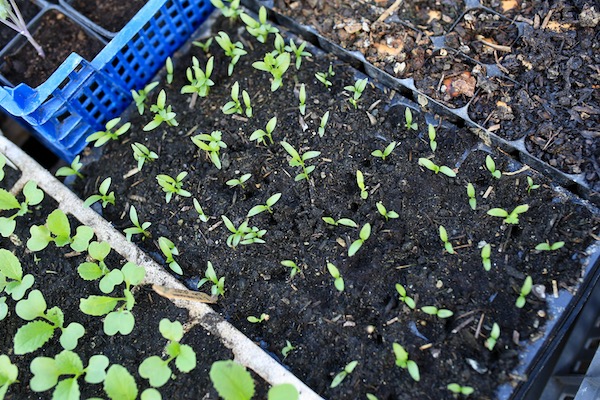
Clearing to replant
Because days are now shortening rapidly, I sometimes clear vegetables before they are quite finished cropping. to have clear space for new transplants. My second online course has a lot about this.

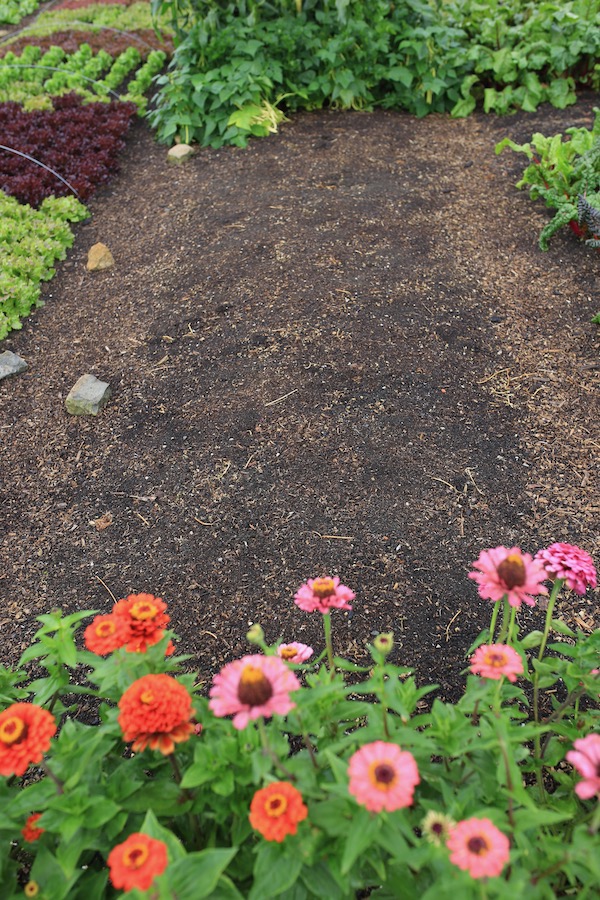
Weedkiller in compost
If not affecting you, please skip to next para.
However there are many gardeners suffering this horror, and I quote one from You Tube to illustrate the problem:
I had stunted growth of my chilli plants this year with curling leaves, I repotted them in a different compost and they shot up afterwards although I think it’s too late and I won’t be getting a chilli harvest from four plants this year.
I didn’t know that weedkiller in compost was even a thing. I’ve had this problem a few times and always thought I’d done something wrong with watering or not keeping my plants warm and in fertile soil. (Michael Skelton, engineer).
If you complain to the UK government HSE, they ‘empathise’ and pretend it’s your fault. Still worth letting them know, otherwise “there is not a problem”. Please do report any problems to CRDEnforcement@hse.gov.uk and UKHotline@corteva.com headed “Pyralid contamination”.
At Homeacres I have a dying and probably dead plum tree and sea holly, where I spread some compost I had been given to try, but shall never know the exact cause, and can prove nothing!


Watering
In dry conditions, the best use of water is to help new plantings establish, say every 2-3 days for a week or two: as with the chicory below right.
Also water fruiting plants, to enjoy more harvest. I did not water climbing beans until 10 days ago, when their pods start to develop and swell, We water celery (my new video), which needs water always. On the other hand, best not give more than maintenance ration to celeriac, until it really starts swelling in a week or two.

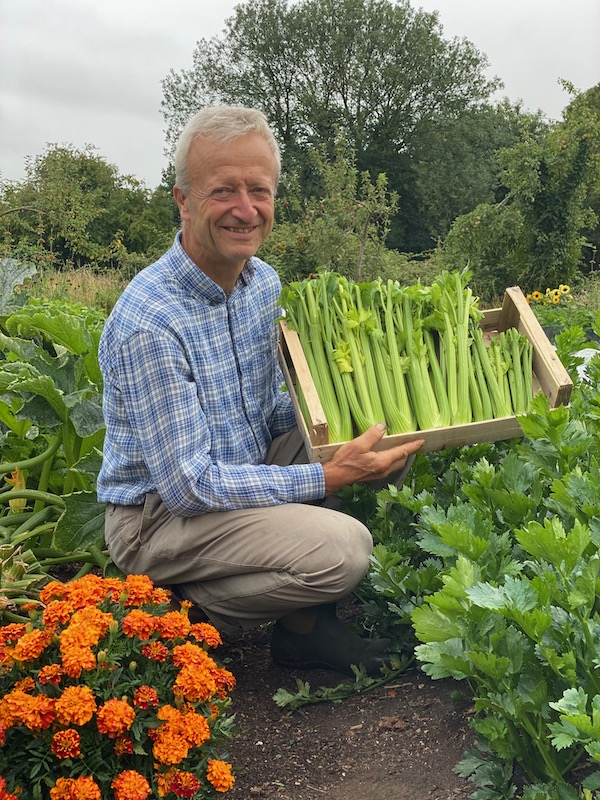
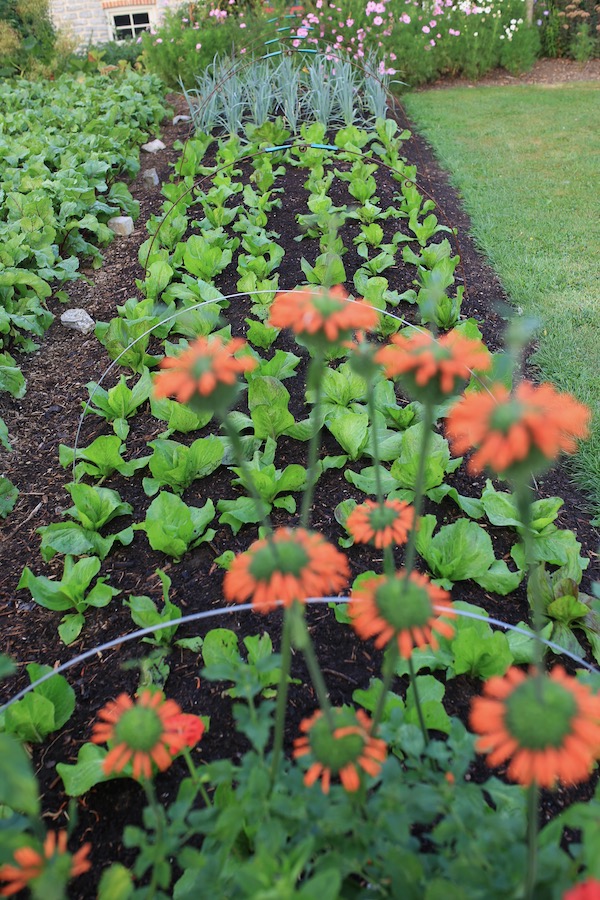
Cucumbers
Cordon cucumbers are a main harvest from undercover growing in summer. My cucumber and beef tomato plants are cropping magnificently, however my cherry tomatoes are poor. Perhaps they dislike the heat more than tomato plants for large fruits. Outdoor tomato plants look healthier than the polytunnel tomatoes, while greenhouse tomato plants are in good shape.
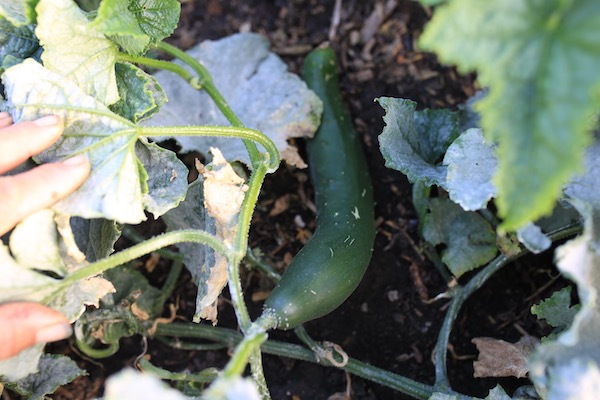
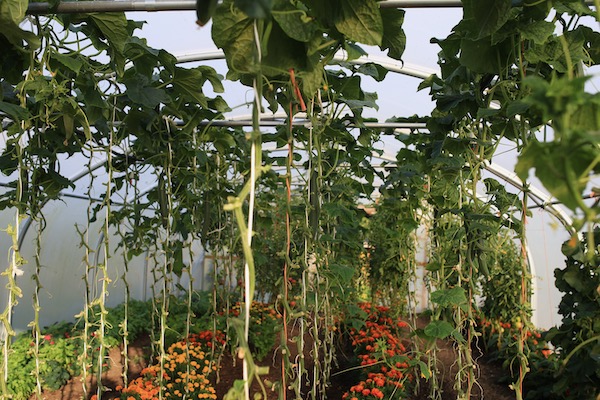
Tomatoes


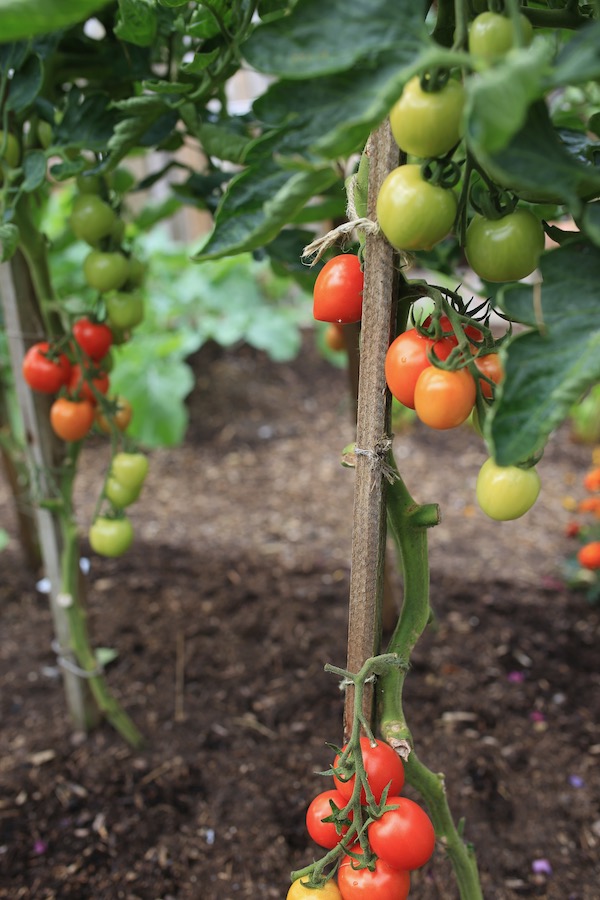
Melons
The recent warmth has helped melons growth a lot. I grow them up strings to save space but find it makes them crop later. This can be a problem in the UK, with our normally cool summers. So far I picked just two from the Early Granite, super tasty. All these are from Real Seeds.
All plants were sown mid April and transplanted third week of May. Compost mulch and no feeds given. We are making a video about training and side-shooting them, for Course no. 3 releasing next February. Note there are no supports for the heavy fruits – another myth!
How to know when a melon is ripe? The aroma… you will know!

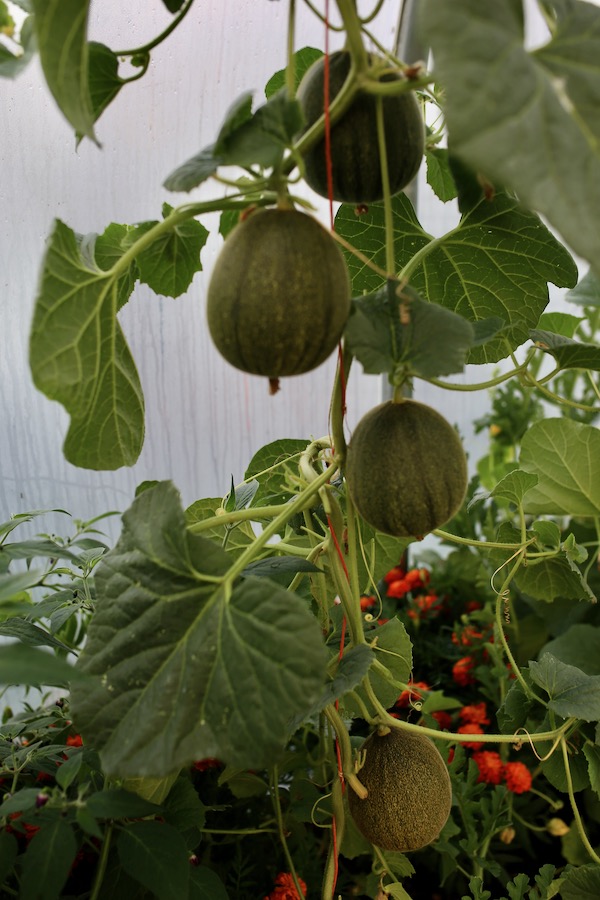
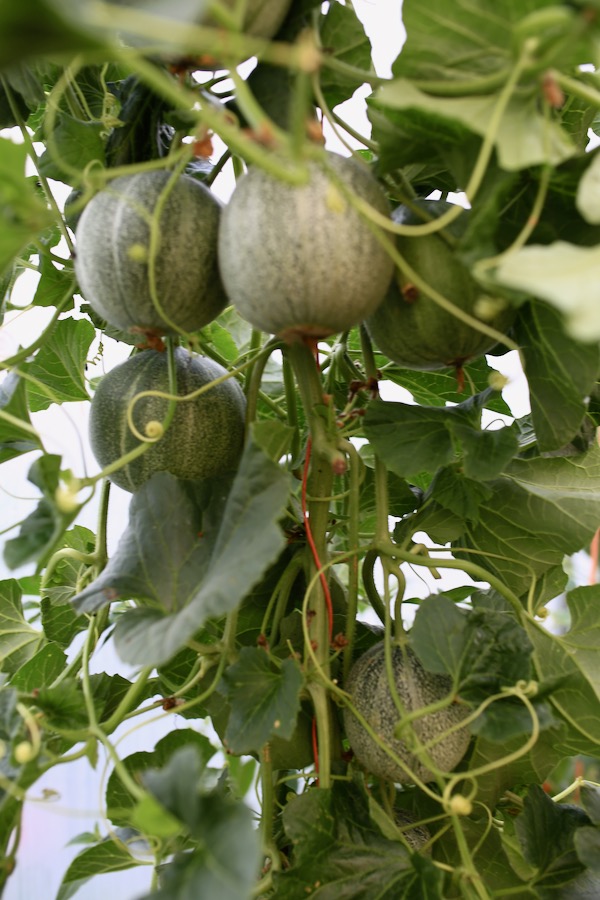
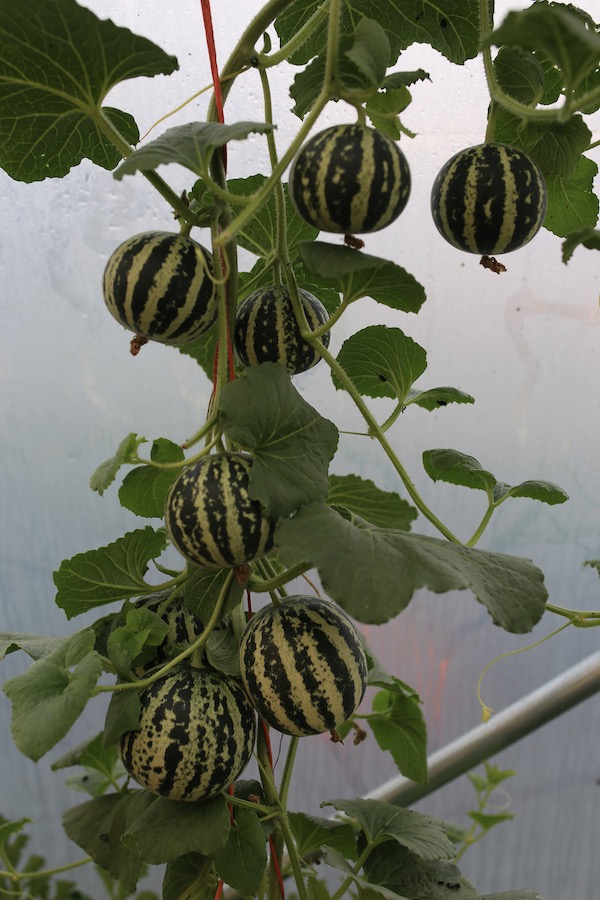
Augergines, watermelon
These love heat as much as melons. I save seed from last year’s Early Moonbeam watermelon, and it looks promising now.
The black aubergines have cropped well, but I lost one plant with leaves going limp, and brown blotches, from Erwinia I think.
The aubergines started as plug plants from Delfland Nurseries near Ely. They are organic and seasonal, worth a look if you miss sowing dates.
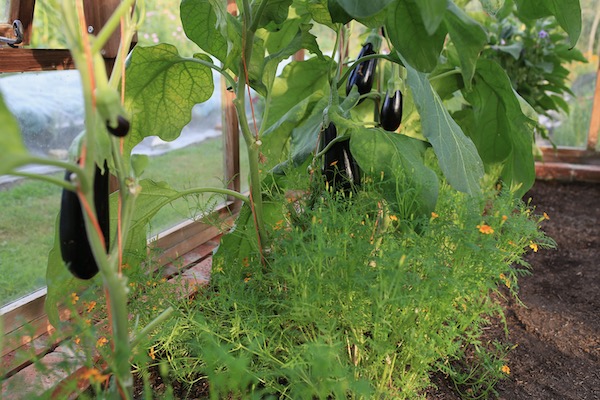
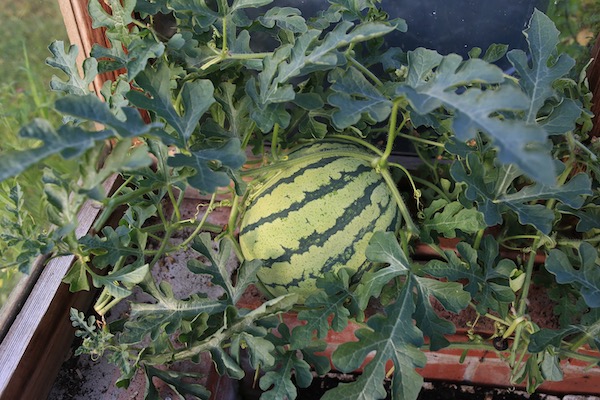
Seed saving
This is a good time for saving many seeds, or being ready to. Remember the four vegetables for which you need only one plant to save seed from, they do not need or ‘suffer’ cross pollination. French bean, tomato, lettuce and pea. We have harvested pea seeds, and lettuce from the polytunnel, but not outside. Find out more in my Saving Seeds video.
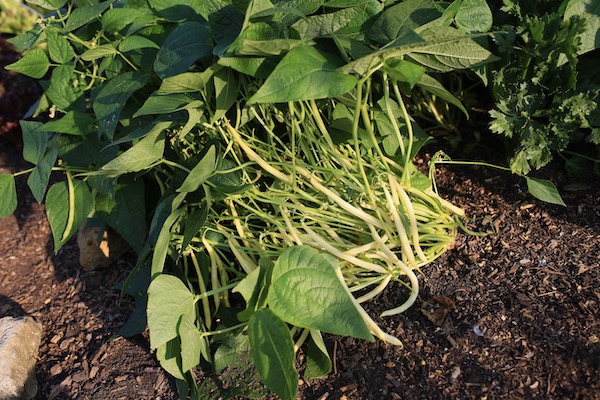
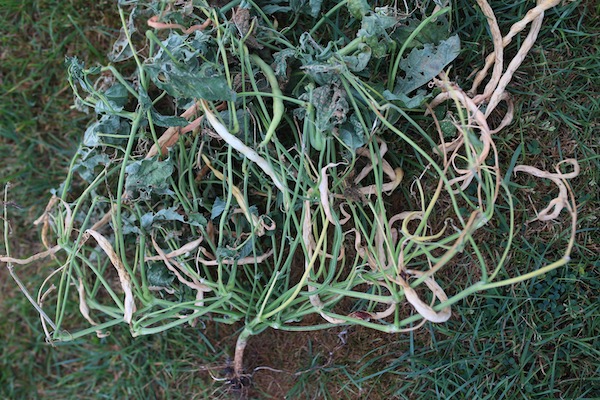
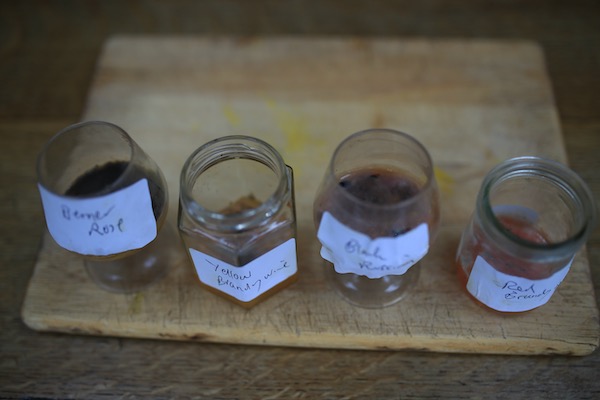
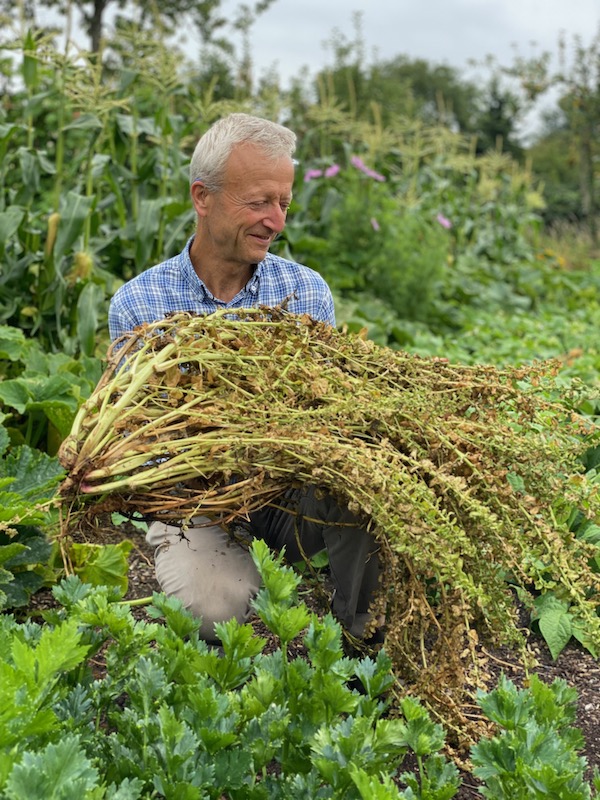


Compost making
I love the options for compost making in high summer. Yesterday Martin turned the heap we finished in mid May, and commented on how soft and crumbly it is already.
We now have many crop residues, such as beetroot leaves, tomato and cucumber prunings, onion tops and clearings of lettuce, beans etc. Plus grass mowings, with some old wood chips mown as well, a bit of soil, paper and cardboard. More details are in this video, and it seems a fair few people are now making variations of Homeacres compost bays. See their measurements on this page, and more descriptions + videos in online course 1.
There are many unnecessary worries about what you can and can’t put in heaps. Here is an example from Mr Fothergills newsletter, about blackspot on roses
“At this time of year roses are more prone to black spot. If you discover it on your foliage, cut away and remove from site. Do not place on your compost heap, as this can encourage it.”
At Homeacres I put all diseased material on the compost heap. except for onion white rot (also club root if I had it). I add blighted leaves, mildew, blackspot and rust. No problems have ensued, even from adding diseased leaves in winter, when heaps are not hot. Diseases mostly need living tissues to survive on, not compost or soil.

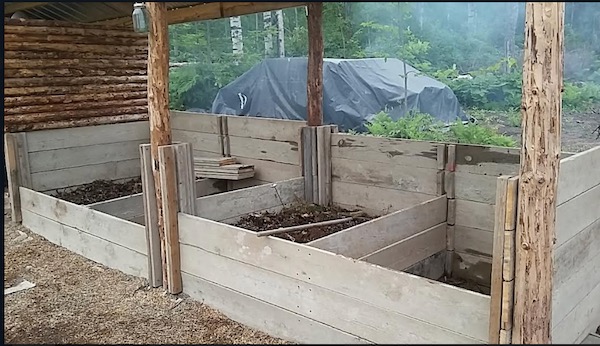
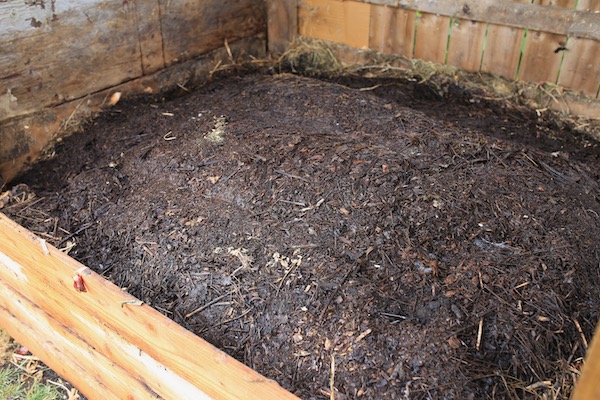
Dryness
In dry weather, I keep noticing healthier and lusher growth of plants on bed edges, near to the paths. Having no wooden sides and weed free paths, ensure full use of path moisture, and nutrients as well. I explain a lot about paths in course 1, because they are not dead space just for walking.
The stand-out exceptions are my two beds with wooden sides (the trial). Plants near to the wooden sides go limp faster than ones in the middle.
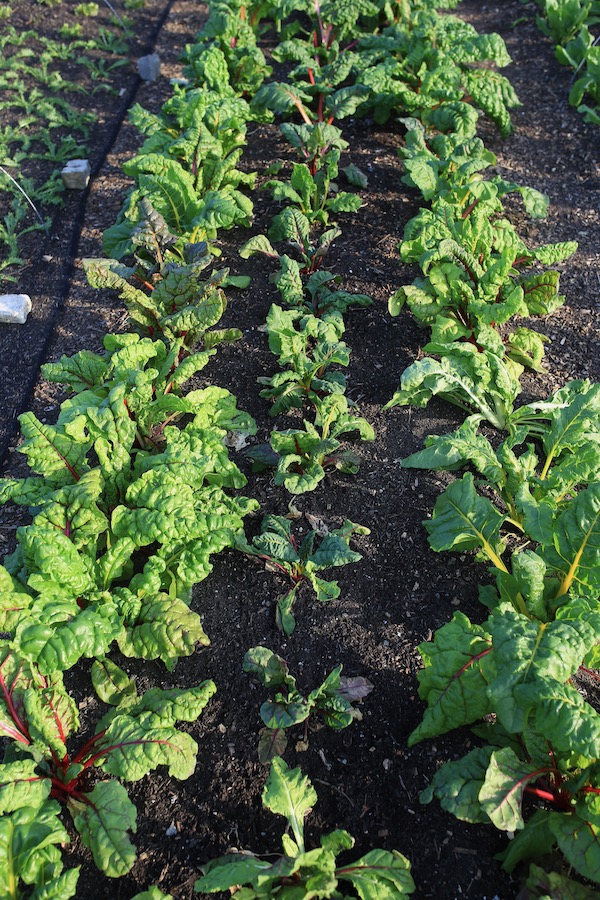
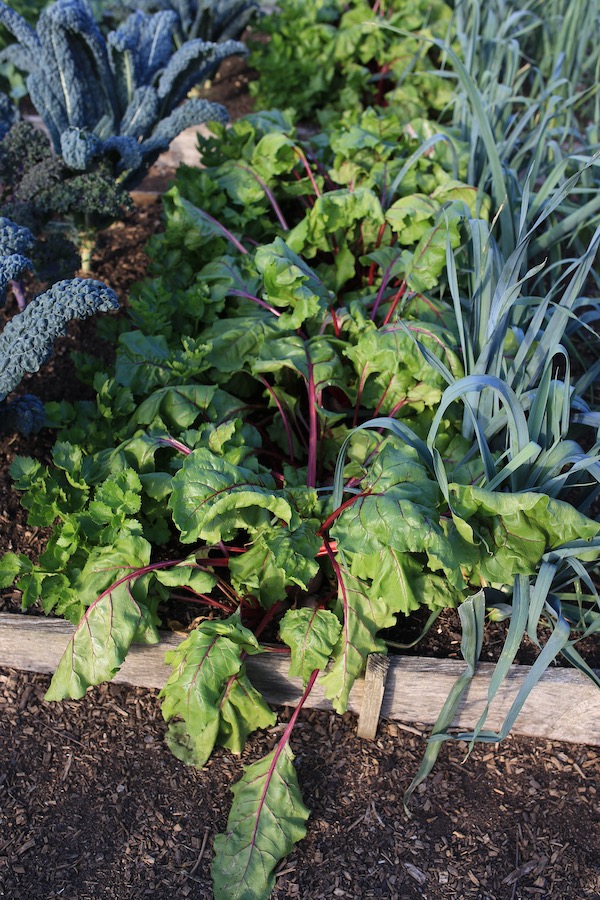
Removing insect covers
Yes you can! once plants are growing strongly, especially if their height means a gap at the sides, which would allow insects in.
Here I was also expecting the weather change and these plants grow so large in the damp warmth of late summer. For caterpillars I spray the Bacillus thuringiensis every 18-20 days. Sorry if it’s hard to find in the UK.

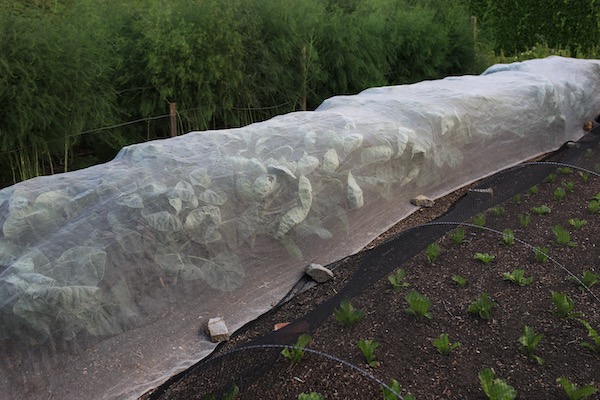

Storing
Already we have garlic and onions hanging in the conservatory, I want to try plaiting a few onions too, we shall see!
Potatoes can store in sacks, as long as they are dry when you sack them. I keep Charlottes in my shed, which is currently very warm, and they keep well. The potatoes and squash growing on compost heaps do not make a significant difference to nutrients in the heap, from what I have observed. Compost is rather more about biology than chemistry.
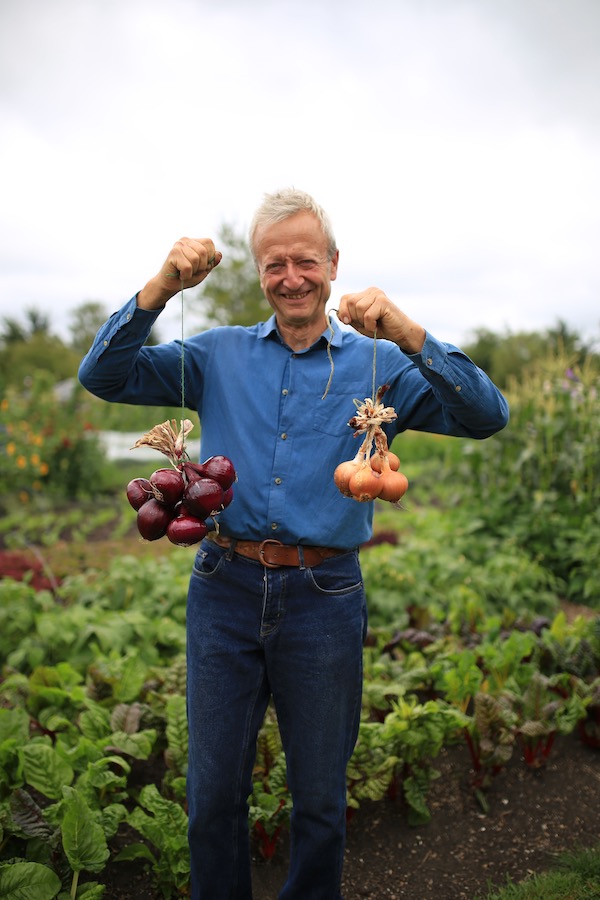
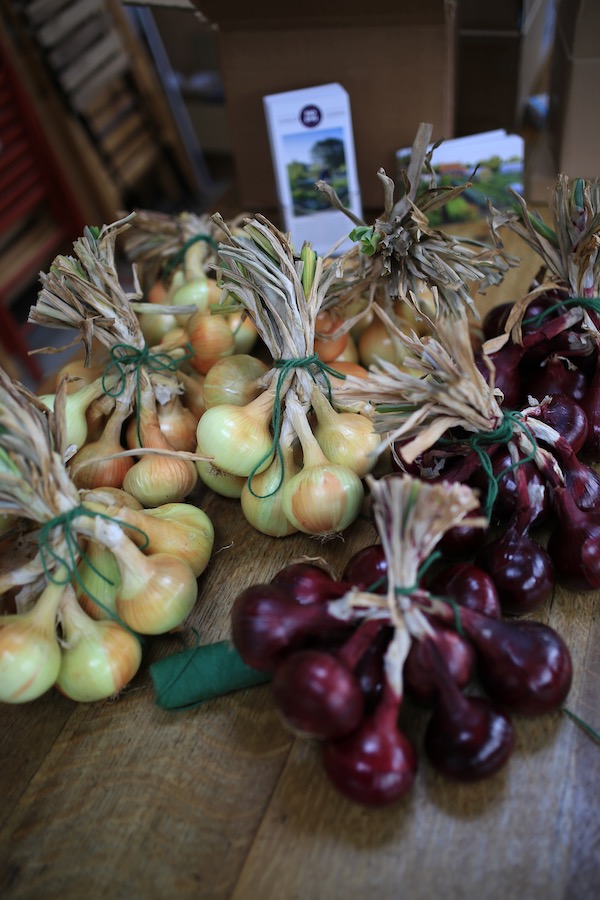









































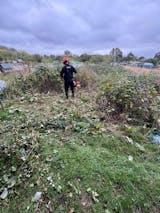
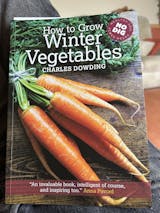


0 comments